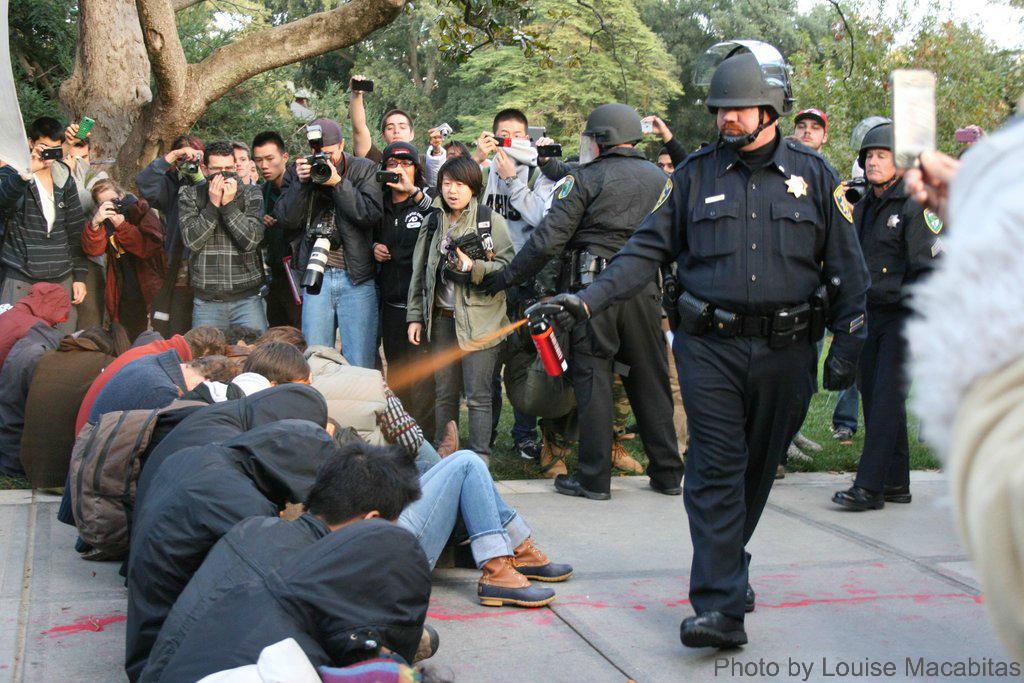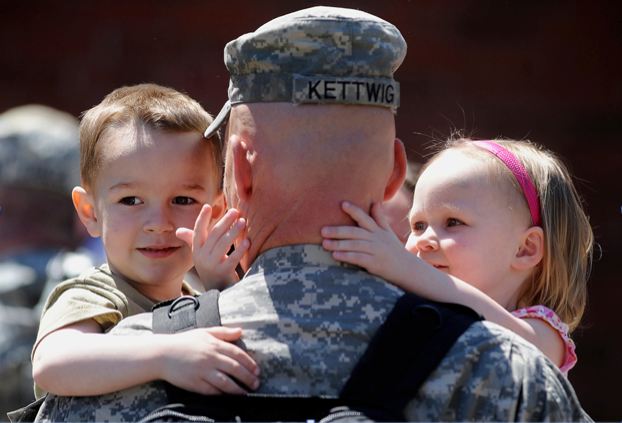The above photograph was taken while we were on a brief hiatus but I figured there would be plenty of time to write about it once we returned after the Thanksgiving Holiday. Little did I imagine that it would go viral, become a meme, and basically disappear from attention in a period of ten days.
One of the things that we’ve learned in writing this blog for the past three years is that the news cycle can be brutal. Blink and it has moved on to something more immediately interesting, as if our attention span is incapable of pondering the rightness and wrongness of human behavior for more than the time it takes to click through a slideshow. But one would hope that genuine acts of unrepentant moral turpitude would not be cast aside so easily or so quickly. Maybe it is because the image of Mary Anne Vecchio wailing in distress at the murder of Jeffrey Miller at a different student protest in the 1970s is so seared in my consciousness that I find the photograph of Officer Pike assaulting students who are the very image of nonviolent rectitude to be so appalling. I taste bile in my mouth every time I look at the image, even now, ten days after first seeing it.
Others have commented on how casual Office Pike appears as he sprays the students, and the point is all the more pronounced in the various U-tube videos that provide live documentation of the event. Indeed, he looks rather like the weekend gardener in ads I’ve seen selling weed spray, killing the chickweed that has infested his otherwise perfectly green lawn as if it doing so makes him a good neighbor by maintaining property values. It is no doubt in large measure that sense of nonchalance that has animated the “Officer Pike” meme that became the basis for literally hundreds of appropriations that show the pepper spraying of everything from cuddly kittens to the founding fathers, as well as inserting him into virtually everyone of the major iconic photographs of 20th century U.S. public culture, such as the flag being raised at Iwo Jima, the Times Square Kiss, accidental napalm, the Tiananmen Square tank man, and the photograph of Mary Anne Vecchio at Kent State.
One could go on at some length to analyze these many appropriations, though their production in such a compressed time period, coupled with how quickly they seem to have become irrelevant, makes it difficult to know quite what to make of it all. There is outrage being expressed at Officer Pike’s nonchalance, to be sure, but also equally heavy doses of adolescent irreverence and cynicism that might lead one to think that the response in general is as much a conditioned, knee jerk reaction as anything at all.
But there is an additional point to be made and one that seems to have been missed by the many commentators and appropriators of the Officer Pike meme. What makes the scene captured here so morally outrageous is not just that the behavior of the police officer is casual, but that it lacks any moral concern at all, despite the fact that it is being witnessed by hundreds of photographers and videographers. It is one think to behave casually in ways that might be morally questionable, it is something altogether different to do so in the full light of day and with the knowledge that the world is watching. Indeed, if anything Officer Pike’s behavior is marked by a conceit that reminds me of the photograph of a lynching that took place in Marian, Indiana in the 1930s where the townspeople are smiling for the camera as they direct attention to the hanging black bodies in the background. Lacking any sense of shame for the scene in which they found themselves, they pointed with pride to what their community had “accomplished.” The officers in the photograph above—and here I mean to call attention to all of the officers—know that they are being photographed and yet they proceed as if there could be no question but that it is appropriate to shoot pepper spray into the faces of citizens sitting on the ground and posing a threat to no one. It is, in short, an image of moral hubris that should be anathema to a liberal-democratic public culture that relies for its life blood on civil (and civilized) dissent.
And yet for all that, we seem to have moved on, the viral video little more than one of the millions of u–tube videos that seem to serve the contemporary role of bread and circuses, the Officer Pike meme an online joke that is on the verge of becoming a trivia question. And the moral outrage that should haunt us all is lost to the news cycle.
Photo Credit: Louise Macabitis


